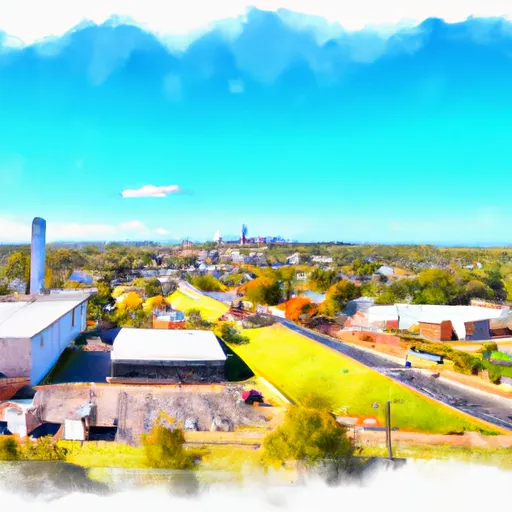-
 Snoflo Premium
Snoflo Premium
Get unlimited access to all our content
With no Ad interruptions! - Start Your Free Trial Login with existing account
Tibbie
Eden Index
Climate
7.2
•
Recreation
0.7
•
Community
•
Safeguard
3.1/10

Tibbie, Alabama is a small rural community located in Washington County, in the southwestern part of the state. The town experiences a humid subtropical climate, characterized by hot, humid summers and mild winters. Average high temperatures during summer reach around 90°F (32°C), while winter temperatures average in the mid-50s°F (12°C). Tibbie receives ample rainfall throughout the year, with an average annual precipitation of around 60 inches.
Hydrologically, Tibbie is situated in a region with numerous creeks and streams that flow into larger bodies of water such as the Tombigbee River and its tributaries. These waterways provide opportunities for fishing, boating, and other recreational activities.
Outdoor enthusiasts visiting Tibbie can explore the nearby Choctaw National Wildlife Refuge, which offers a range of recreational activities including hunting, fishing, wildlife viewing, and hiking. The refuge is home to various wildlife species, including alligators, deer, and a variety of bird species, making it an ideal destination for nature lovers.
In summary, Tibbie, Alabama experiences a humid subtropical climate, with hot summers and mild winters. The area boasts numerous waterways and is surrounded by the Choctaw National Wildlife Refuge, providing ample opportunities for outdoor recreation activities such as fishing, boating, and wildlife viewing.
What is the Eden Index?
The Snoflo Eden Index serves as a comprehensive rating system for regions, evaluating their desirability through a holistic assessment of climate health, outdoor recreation opportunities, and natural disaster risk, acknowledging the profound impact of these factors on livability and well-being.
Climate Health Indicator (CHI): 7.2
Tibbie receives approximately
1587mm of rain per year,
with humidity levels near 85%
and air temperatures averaging around
19°C.
Tibbie has a plant hardyness factor of
8, meaning
plants and agriculture in this region tend to thrive here all year round.
By considering the ideal temperature range, reliable water supplies, clean air, and stable seasonal rain or snowpacks, the Climate Health Indicator (CHI) underscores the significance of a healthy climate as the foundation for quality living.
A healthy climate is paramount for ensuring a high quality of life and livability in a region, fostering both physical well-being and environmental harmony. This can be characterized by ideal temperatures, reliable access to water supplies, clean air, and consistent seasonal rain or snowpacks.
Weather Forecast
Streamflow Conditions
Mobile Bay- Tombigbee
Area Rivers
Mobile Bay- Tombigbee
Snowpack Depths
Mobile Bay- Tombigbee
Reservoir Storage Capacity
Mobile Bay- Tombigbee
Groundwater Levels
Recreational Opportunity Index (ROI): 0.7
The Recreational Opportunity Index (ROI) recognizes the value of outdoor recreational options, such as parks, hiking trails, camping sites, and fishing spots, while acknowledging that climate plays a pivotal role in ensuring the comfort and consistency of these experiences.
Access to outdoor recreational opportunities, encompassing activities such as parks, hiking, camping, and fishing, is crucial for overall well-being, and the climate plays a pivotal role in enabling and enhancing these experiences, ensuring that individuals can engage in nature-based activities comfortably and consistently.
Camping Areas
| Campground | Campsites | Reservations | Toilets | Showers | Elevation |
|---|---|---|---|---|---|
| Service | 32 | 123 ft | |||
| Lenoir Landing - Coffeeville Lake | None | 52 ft | |||
| Lakeview RV City Park | None | 230 ft | |||
| Chickasabogue Park | None | 39 ft | |||
| St. Stephens Historical Park | None | 48 ft | |||
| Sumter Rec Area | None | 128 ft | |||
| Dauphin Island City Park | 150 | 6 ft | |||
| Bladon Springs State Park | 10 | 193 ft | |||
| Citronelle Lakeview RV Park | 24 | 226 ft | |||
| Old Lock 1 - Coffeeville Lake | None | 30 ft |
Nearby Ski Areas
Catastrophe Safeguard Index (CSI):
The Catastrophe Safeguard Index (CSI) recognizes that natural disaster risk, encompassing floods, fires, hurricanes, and tornadoes, can drastically affect safety and the overall appeal of an area.
The level of natural disaster risk in a region significantly affects safety and the overall livability, with climate change amplifying these risks by potentially increasing the frequency and intensity of events like floods, fires, hurricanes, and tornadoes, thereby posing substantial challenges to community resilience and well-being.
Community Resilience Indicator (CRI):
The Community Resilience Indicator (CRI) recognizes that education, healthcare, and socioeconomics are crucial to the well-being of a region. The CRI acknowledges the profound impact of these elements on residents' overall quality of life. By evaluating educational resources, healthcare accessibility, and economic inclusivity, the index captures the essential aspects that contribute to a thriving community, fostering resident satisfaction, equity, and social cohesion.

